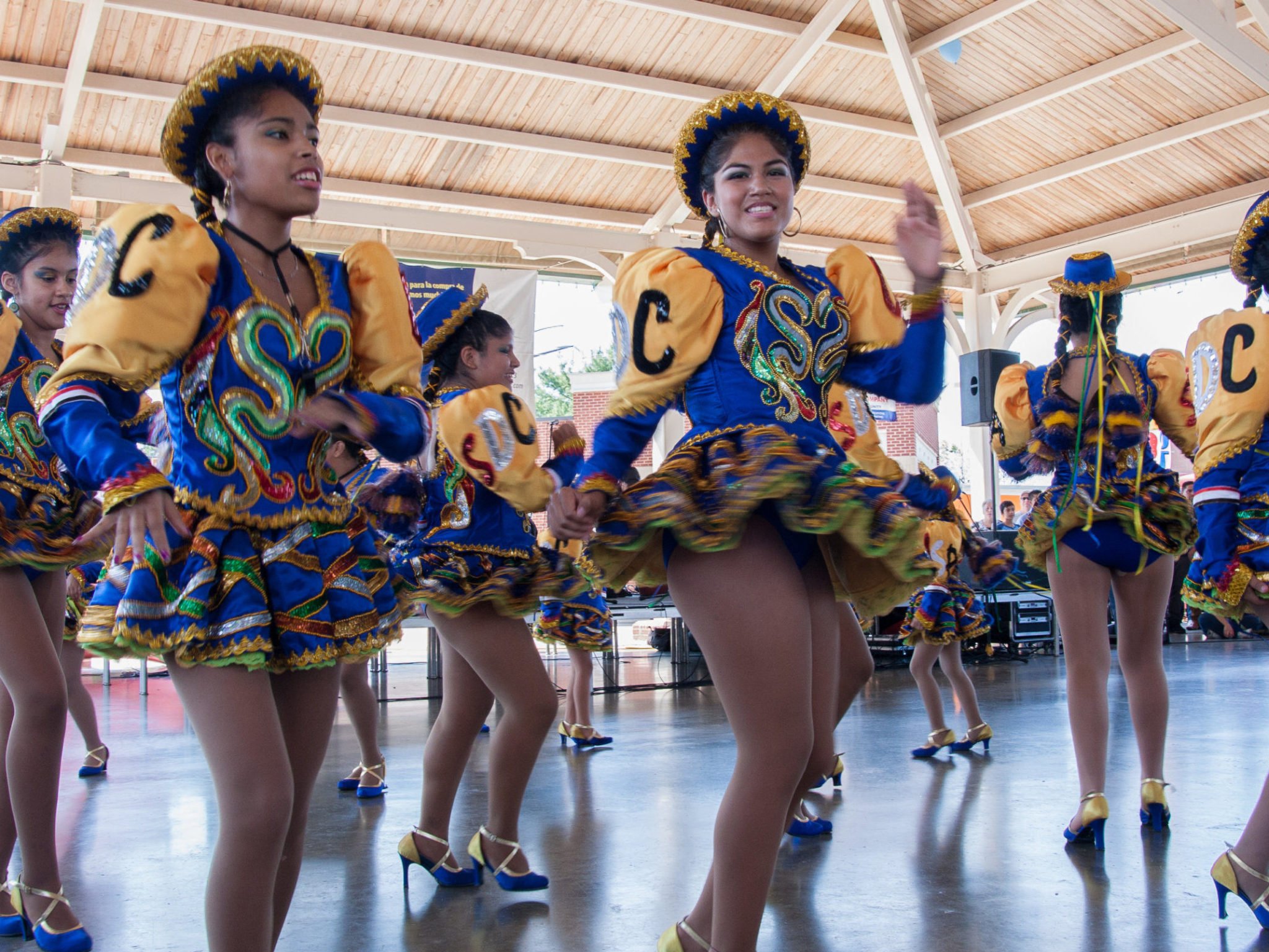Imagine a place where connections are real, where the sounds of vibrant music fill the air, and where everyone feels right at home. This is the heart of what a "latino fan club" could be, a welcoming spot for people who share a love for Latin American culture and its many wonderful expressions. It's a gathering, a community, a way to celebrate heritage and shared experiences, you know, just a really special kind of group.
When we talk about Latin American culture, it's a huge, beautiful tapestry woven with threads from so many different places and histories. There's a lot to explore, and sometimes, the words we use to describe people from this wide background can get a little mixed up. It's pretty common for folks to wonder about the differences between terms like "Hispanic" and "Latino," and that's okay, actually. Understanding these words helps us appreciate the true scope of who we are talking about.
This article will take a closer look at these terms, helping to clear up any confusion so that a "latino fan club" can truly embrace everyone who belongs. We will get into what each word means, where it comes from, and why knowing the right way to talk about identity matters so much. It's all about making sure everyone feels seen and respected, which is, more or less, what any good fan club is all about.
Table of Contents
- What Makes Up a Latino Fan Club?
- Understanding the Words We Use for Our Latino Fan Club
- The Growing Presence of Latino Fan Club Members
- Why Accurate Language Matters for a Latino Fan Club
- Embracing the Richness in Our Latino Fan Club
What Makes Up a Latino Fan Club?
A "latino fan club" is, at its core, a place where people with a shared appreciation for Latin American culture gather. This could be about music, food, art, history, or just the general spirit of togetherness that often comes with these communities. It's a space where you can feel a sense of belonging, pretty much, and connect with others who get it. Think of it as a hub for cultural exchange and celebration, really.
The folks who might join such a club come from all sorts of backgrounds. Someone who is Latino or Latina, or Hispanic, can be of any race or color, which is a key point to remember. This means that within a "latino fan club," you would find people with light skin, dark skin, and every shade in between. You'd meet people whose ancestors came from Europe, Africa, Indigenous groups, and Asia, all blended together in the unique ways that make up Latin America. It's a truly diverse mix, actually, and that's part of what makes it so interesting.
The club's activities might involve learning a new dance step, trying out a traditional recipe, listening to different styles of music from various Latin American countries, or discussing historical events that shaped the region. It's about building bridges and celebrating the common threads, while also respecting the individual differences that make each person's story unique. So, in a way, it's about education and enjoyment all at once, you know.
Understanding the Words We Use for Our Latino Fan Club
When we talk about the people who make up a "latino fan club," or just people from Latin America in general, we often hear a few different words. These terms, like "Latino," "Latina," "Hispanic," "Latinx," and "Latine," can sometimes seem a bit confusing. But, you know, each one has its own specific meaning and history, and understanding them helps us to be more precise and respectful in our conversations. It's pretty important, really, to get this right.
What is the Difference Between Latino and Hispanic for a Latino Fan Club?
People often use "Hispanic" and "Latino" as if they mean the exact same thing, and it's an easy error to make because there is some overlap between the two groups. However, "Hispanic" and "Latino" do have distinct meanings, which is good to know, especially for a "latino fan club" aiming for inclusivity. The main difference comes down to language versus geography, so to speak.
To put it simply, "Hispanic" generally points to the language a person speaks, or the language their ancestors spoke. This term refers to people, or things, that have a connection to Spanish-speaking countries. So, someone from Spain would be considered Hispanic because Spain is a Spanish-speaking country. But, you know, someone from Brazil would not be Hispanic because Brazil's main language is Portuguese, not Spanish. It's all about the language link, basically.
On the other hand, "Latino" is typically understood as a shorter way to say "Latinoamericano" in Spanish, or "Latino" in Portuguese. This term refers to people living in the United States who have cultural connections to Latin America. As an adjective, the term describes things having ties with Latin America. This means "Latino" includes people from Brazil, since Brazil is in Latin America, but it does not include people from Spain, because Spain is in Europe. So, in a way, "Latino" is more about where your roots are geographically in the Americas, below the U.S. border, you could say.
So, someone could be both Hispanic and Latino, like a person from Mexico. Or they could be Latino but not Hispanic, like someone from Brazil. And then, there are people who are Hispanic but not Latino, such as someone from Spain. This distinction is pretty key for a "latino fan club" to truly understand its membership and celebrate all its members. It's about embracing the wide range of backgrounds, you know, that make up the community.
Exploring Latino and Latina Within a Latino Fan Club
The words "Latino" and "Latina" are forms of a noun that point to people living in the United States who have cultural ties to Latin America. "Latino" is the masculine form, typically used for men, while "Latina" is the feminine form, usually used for women. These terms describe a person "of Latin American origin or descent," especially one who lives in the United States. It's pretty straightforward, actually, when you think about it that way.
For a "latino fan club," using these terms correctly shows respect for how people choose to identify themselves. It's about acknowledging the gendered nature of the Spanish and Portuguese languages, which these words come from. So, when you're talking about a group of men, you might say "Latinos," and for a group of women, "Latinas." When referring to a mixed group, "Latinos" has traditionally been used as the default plural, but newer terms have come into use to be more inclusive, which is pretty neat, you know.
Scripps News, for instance, has looked into the rich history of each term and what they mean, which just goes to show that there's a lot of thought behind how these words are used. Understanding these nuances helps a "latino fan club" create an even more welcoming and thoughtful environment for everyone. It's about being mindful of language and its impact, basically, on how people feel.
How Did These Words Come to Be Used in a Latino Fan Club Context?
The words "Hispano" and "Latino" have a history that stretches back quite a bit, you know. In the second half of the 19th century, abbreviated forms like "Hispano" and "Latino" were in use in California among Spanish speakers. However, eventually, other terms replaced them, as language often evolves over time. So, these words aren't new inventions, but their popular use and specific meanings have changed over the years, which is pretty interesting, actually.
The word "Latino" itself existed long before the 1960s, which is a common misconception. Its meaning has always been tied to someone who is a native or an inhabitant of Latin America. The widespread discussion and adoption of "Latino" as an alternative to "Hispanic" in certain contexts, particularly in the United States, gained more traction later on. This was partly because "Latino" includes Brazil, which "Hispanic" does not, making it a broader term for people from the region. So, it offered a different way to categorize people, more or less, that some preferred.
For a "latino fan club," knowing this history can help members appreciate the ongoing conversation about identity and language. It shows that how we describe ourselves and others is not fixed but changes with cultural understanding and societal needs. It's a living part of our shared experience, you know, and it keeps evolving. This historical perspective really adds depth to the club's purpose, allowing for richer discussions and a better sense of shared heritage.
The Growing Presence of Latino Fan Club Members
It's a fact that people of Latin American descent are currently the largest minority group in the United States. This means that a "latino fan club" has a very large and growing potential membership base. Yet, despite this significant presence, many people are still a bit unsure about how to refer to this incredibly diverse group of people. This lack of clarity can sometimes make it harder for people to connect, which is why understanding the terms is so valuable, you know.
The sheer number of individuals who identify as Latino or Hispanic means there's a huge variety of cultures, traditions, and personal stories to celebrate within any "latino fan club." You'd find members whose families come from dozens of different countries, each with its own unique flavor of music, food, and customs. This diversity is a huge strength, really, and it offers endless opportunities for learning and enjoyment within the club.
A club like this can serve as a place where these different backgrounds come together, where people can learn from each other and share their distinct cultural expressions. It helps to bridge gaps and build a stronger sense of community among people who might otherwise feel like they are just part of a big, undefined group. It's about making those connections real, basically, and celebrating what makes each person special.
Why Accurate Language Matters for a Latino Fan Club
Using the right words when talking about identity is really important, especially for a "latino fan club" that aims to be welcoming and respectful to everyone. When people use terms incorrectly or interchangeably without knowing the differences, it can sometimes lead to misunderstandings or even make people feel like their identity isn't fully seen or appreciated. It's about showing respect, you know, for individual and group identity.
For instance, knowing that "Hispanic" refers to language and "Latino" refers to geography helps members of a "latino fan club" understand the broad spectrum of experiences within the community. It means recognizing that someone from Brazil, who speaks Portuguese, is just as much a part of the "Latino" community as someone from Mexico, who speaks Spanish. This distinction helps to ensure that no one feels left out, which is pretty fundamental for any fan club.
It's also about empowering individuals to choose how they want to be identified. Some people might prefer "Latino," others "Hispanic," and some might use newer terms like "Latinx" or "Latine," which aim to be gender-neutral. A truly inclusive "latino fan club" would respect these personal choices, fostering an environment where everyone feels comfortable expressing who they are. This open-minded approach is, in a way, what makes a community truly strong and vibrant.
Embracing the Richness in Our Latino Fan Club
The beauty of a "latino fan club" lies in its ability to bring together a wide array of people who share a common thread: a connection to Latin America. This connection is incredibly rich and varied, encompassing a multitude of languages, traditions, and histories. It's about celebrating the many shades of identity that exist within this vast cultural landscape, which is pretty amazing, you know.
By understanding the differences between terms like "Hispanic" and "Latino," and appreciating the nuances of words like "Latina," the "latino fan club" can build a stronger, more informed community. It's about moving past simple labels to truly see and value the individual stories and experiences that each person brings to the group. This kind of awareness helps to create a space where everyone feels a deep sense of belonging, which is what any good fan club truly aims for, basically.
Ultimately, a "latino fan club" is a celebration of identity, culture, and community. It's a place to learn, to share, and to connect with others who appreciate the incredible diversity and vibrancy of Latin American heritage. It's a testament to the idea that understanding and respect are the foundations of any meaningful connection, and that's, you know, a pretty powerful thing.
This article has explored the concept of a "latino fan club" by shedding light on the definitions of "Latino," "Latina," and "Hispanic," drawing from information that explains these terms. We discussed how a Latino or Hispanic person can be of any race or color, and that "Latino" often serves as a shorthand for Latin American origin, while "Hispanic" points to Spanish language ties. We also touched upon the historical use of these words and the significant presence of people of Latin American descent in the United States. The discussion highlighted why using accurate language is important for fostering an inclusive environment within a "latino fan club," allowing for a deeper appreciation of the rich cultural diversity.



Detail Author:
- Name : Aniya Connelly
- Username : carmela09
- Email : jenkins.norberto@stark.com
- Birthdate : 1978-03-28
- Address : 45446 Hollis Harbors Apt. 050 East Timmothy, MA 61182
- Phone : 1-303-663-8472
- Company : Zulauf, Batz and Zieme
- Job : Substation Maintenance
- Bio : Iure vitae ullam animi harum quo laborum aut. Quis nisi est dolore accusantium impedit debitis. Veritatis minima debitis temporibus unde culpa. Dolore quas magnam voluptas dolorem labore.
Socials
instagram:
- url : https://instagram.com/jbrakus
- username : jbrakus
- bio : Voluptatum dolorum doloremque ipsa rem quisquam quo. Cum explicabo totam error omnis in suscipit.
- followers : 5374
- following : 745
twitter:
- url : https://twitter.com/brakusj
- username : brakusj
- bio : Et rem rerum rerum. Sed veniam atque eum voluptate enim. Non aut est non enim corporis.
- followers : 6897
- following : 1904
facebook:
- url : https://facebook.com/brakusj
- username : brakusj
- bio : Harum dignissimos doloribus qui quas minus. Rerum nobis ea cumque dolor eaque.
- followers : 1231
- following : 183
tiktok:
- url : https://tiktok.com/@brakus2019
- username : brakus2019
- bio : Qui sint molestiae quis repellat perferendis optio.
- followers : 3764
- following : 953
linkedin:
- url : https://linkedin.com/in/jbrakus
- username : jbrakus
- bio : Fugiat dolor qui delectus suscipit amet.
- followers : 1784
- following : 1971

